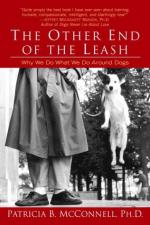|
This section contains 542 words (approx. 2 pages at 400 words per page) |

|
Chapter 5 Summary and Analysis
Humans and dogs are alike in that they both like to play games, well into adulthood. This is known as paedomorphism—the retention of juvenile qualities (here, playfulness) into adulthood. Humans and dogs are rare in the animal world when it comes to this retained playfulness.
Paedomorphism can go as deep as physiology. A study with foxes, in which researchers bred generation of foxes, selecting for the greatest docility among foxes they mated, showed that the resultant adult docile foxes retained physical traits normally reserved for the juvenile foxes—floppy ears, curly tails, and even different brain chemistry. In the case of dogs, paedomorphism dictates that dogs behave like the juveniles of their ancestors—wolves. This in part accounts for the strong bond humans have with dogs. We are both playful.
A special section is devoted to our...
(read more from the Chapter 5 Summary)
|
This section contains 542 words (approx. 2 pages at 400 words per page) |

|




